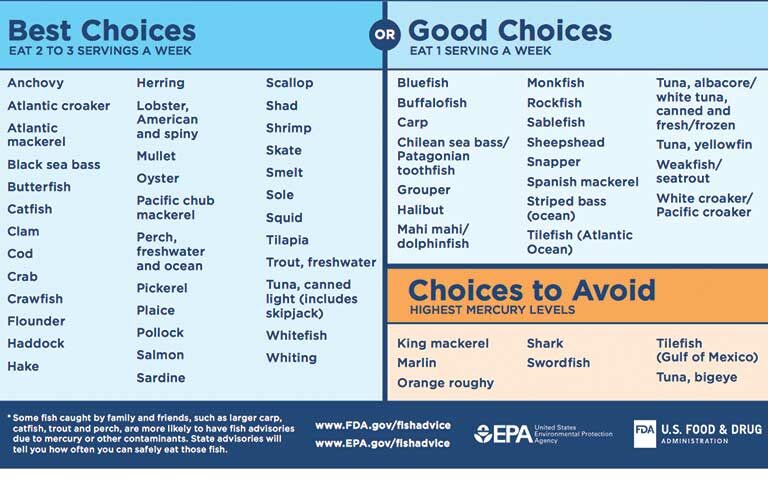Which seafood is safe for pregnant women to eat? New chart offers guidelines

Washington — The Food and Drug Administration, together with the Environmental Protection Agency, is encouraging pregnant women, breastfeeding mothers and mothers of young children not to bypass the benefits of eating seafood – as long as it’s the right kind, in the right amount.
“Many consumers” have limited or avoided fish because of concerns over mercury, Susan Mayne, director of FDA’s Center for Food Safety and Applied Nutrition, said in a July 2 press release. “In fact, we have seen that women in the U.S. who are pregnant are consuming far less than the recommended amount of seafood,” Mayne added.
The 2015-2020 Dietary Guidelines recommend eating 8 ounces of seafood per week, based on a 2,000-calorie daily diet, for anyone 2 and older. Women who are pregnant or breastfeeding can consume 8 to 12 ounces per week from “choices that are lower in mercury … including ones commonly found in grocery stores.”
The agencies created a chart that breaks down fish by “best,” “good” and “avoid.”
Pregnant/breastfeeding women and young children should avoid eating these fish, as they have the highest mercury levels:
- Bigeye tuna
- King mackerel
- Marlin
- Orange roughy
- Shark
- Swordfish
- Tilefish
Canned tuna should be limited to one serving per week. FDA considers 4 ounces one serving for most people (1 ounce for children ages 2 to 10). If you’re eating fish caught by family or friends, check EPA’s fish advisory and limit yourself to one serving for that week.
Post a comment to this article
Safety+Health welcomes comments that promote respectful dialogue. Please stay on topic. Comments that contain personal attacks, profanity or abusive language – or those aggressively promoting products or services – will be removed. We reserve the right to determine which comments violate our comment policy. (Anonymous comments are welcome; merely skip the “name” field in the comment box. An email address is required but will not be included with your comment.)
